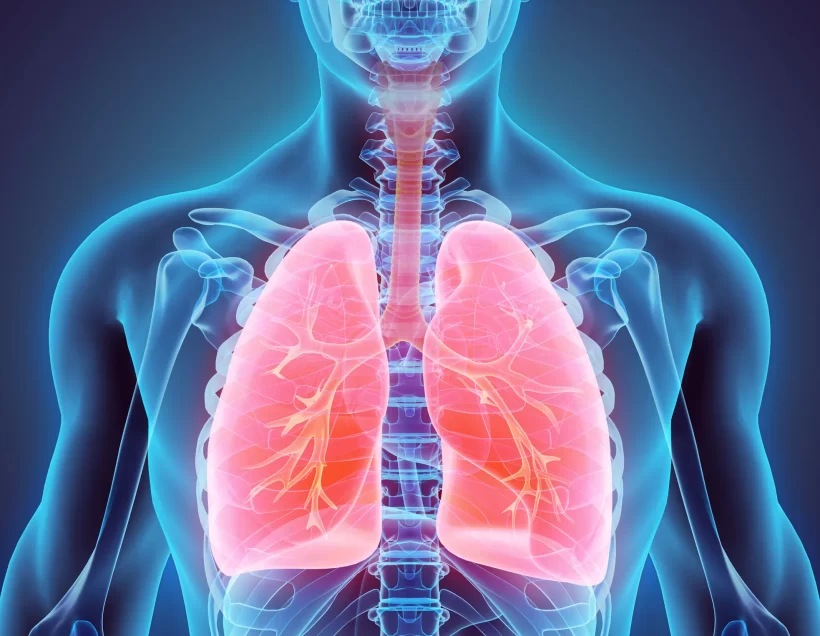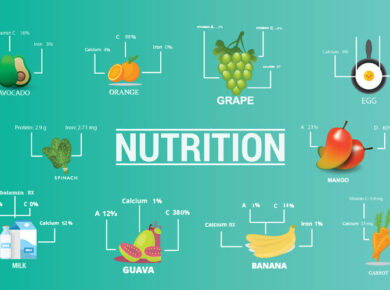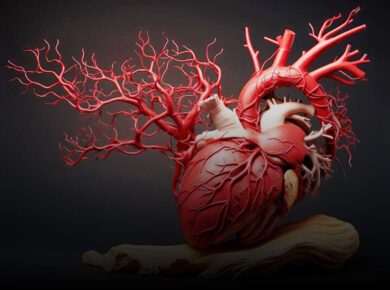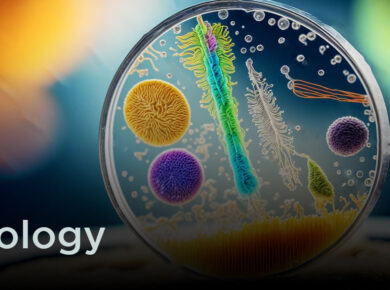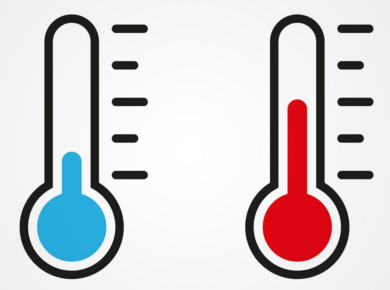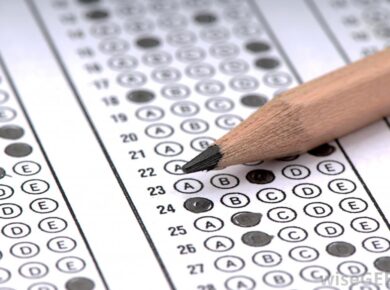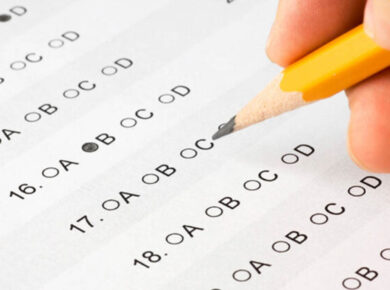The Respiratory System
The Respiratory System is the anatomical system of an organism that introduced respiratory gases to the interior and performs gas exchange. In humans and other mammals, the anatomical features of the respiratory system include airways, lungs and the respiratory muscles. Molecules of oxygen and carbon dioxide are passively exchanged, by diffusion between the gaseous external environment and the blood.
This exchange process occurs in the alveolar region of the lungs. Other animals, such as insects have respiratory systems with very simple anatomical features with very simple anatomical features and in amphibians even the skin plays a vital role in gas exchange.
Plants also have respiratory systems but the directionality of gas exchange can be opposite to that in animals. The respiratory system in plants also includes anatomical features such as holes on the undersides of leaves known as stomata.
Physiology in mammals
Ventilation
In respiratory physiology, ventilation (or ventilation rate) is the rate at which gas enters or leaves the lung. It is categorized under the following definitions.
Measurement Equation Description
- Minute ventilation tidal volume
- Respiratory rate the total volume of gas entering the lungs per minute.
- Alveolar ventilation (tidal volume – dead space)
- Respiratory rate – The volume of gas per unit time that reaches the alveoli, the respiratory portions of the lungs where gas exchange occurs.
- Dead
- Ventilation space dead space
- Respiratory rate
- The Volume of gas per unit time that does not reach these respiratory portions, but instead remains in the airways (traches, bronchi, etc.).
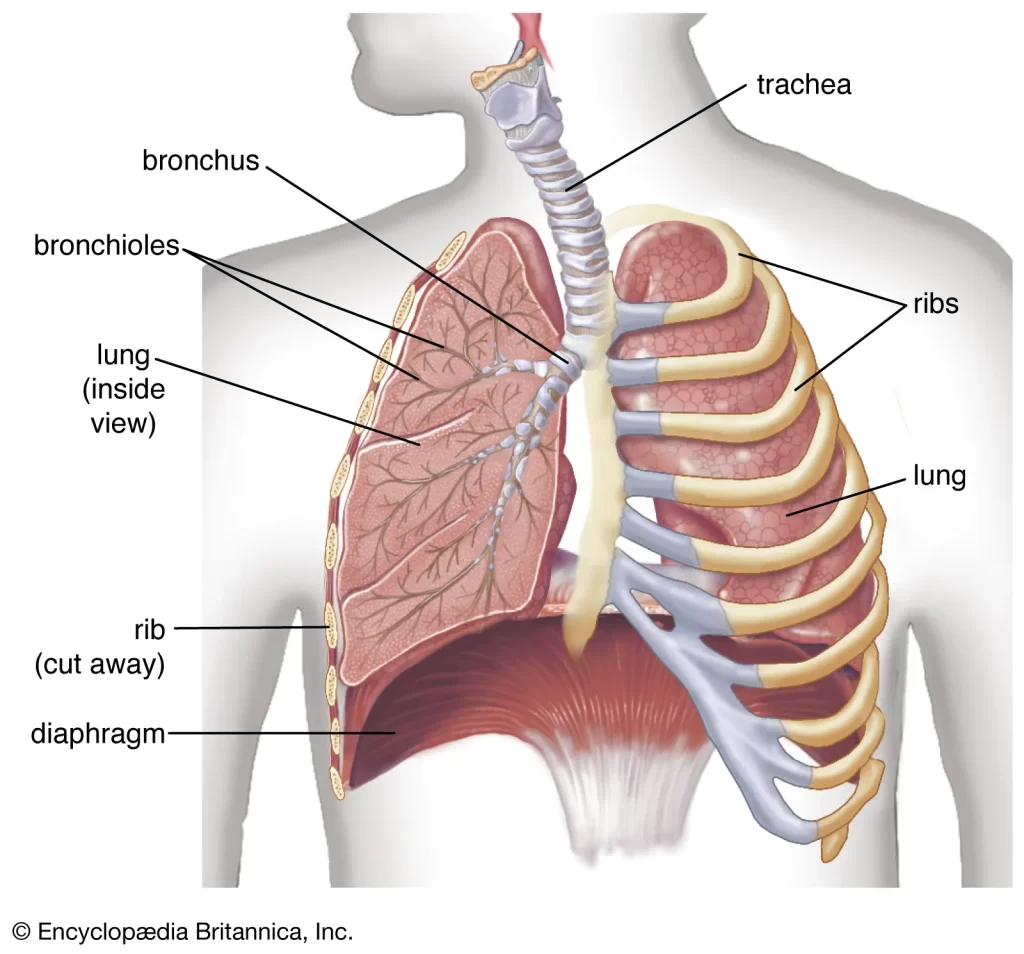
Control
Ventilation occurs under the control of the autonomic nervous system from parts of the brain stem, the medulla oblongata and the pons. This area of the brain forms the respiration regulatory center, a series of interconnected brain within the lower and middle brain stem which coordinate respiratory movements.
The sections are the pneumotaxic center, the apneustic center and the dorsal and ventral respiratory groups. This section is especially sensitive during infancy and the neurons can be destroyed. If the infant is dropped and/or shaken violently. The result can be death due to “shaken baby syndrome”.
Inhalation
Inhalation is initiated by the diaphragm and supported by the external intercostal muscles. Normal resting respirations are 10 to 18 breaths per minute, with a time period of 2 seconds. During vigorous inhalation (at rates exceeding 35 breaths per minute), or in approaching respiratory are recruited for support. These consist of sternocleidomastoid, platysma and the scalene muscles of the neck. Pectoral muscles and latissimus dorsi are accessory muscles.
Under normal conditions, the diaphragm is the primary driver of inhalation. When the diaphragm contracts, the ribcage expands and the contents of the abdomen are moved downward. This results in a larger thoracic volume and negative pressure (with respect of atmospheric pressure) inside the thorax. As the pressure in the chest falls, air moves into the conducting zone. Here, the air is filtered, warmed and humidified as it flows to the lungs.
During forced inhalation, as when taking a deep breath, the external intercostal muscles and necessary muscles aid in further expanding the thoracic cavity,. During inhalation the diaphragm contracts.
Exhalation
Exhalation is generally a passive process; however, active or forced exhalation is achieved by the abdominal and the internal intercostal muscles. During this process air is forced or exhaled out.
The lungs have a natural elasticity, as they recoil from the stretch of inhalation, air flows back out until the pressures in the chest and the atmosphere reach equilibrium.
During forced exhalation, as when blowing out a candle, expiratory muscles including the abdominal muscles and internal intercostal muscles, generate abdominal and thoracic pressure, which forces air out of the lungs.
Gas Exchange
The major function of the respiratory system is gas exchange between the external environment and an organism’s circulatory system. In humans and other mammals, this exchange facilitates oxygenation of the blood with a concomitant removal of carbon dioxide and other gaseous metabolic wastes from the circulation.
As gas exchange occurs, the acid-base balance of the body is maintained as part of homeostasis. If proper ventilation is not maintained, two opposing conditions could occur: respiratory acidosis, a life threatening condition and respiratory alkalosis.
Upon inhalation, gas exchange occurs at the alveoli, the tiny sacs which are the basic functional component of the lungs. The alveolar walls are extremely thin (approx. 0.2 micrometers). These walls are composed of a single layer of epithelia cells (type I and type II epithelial cells) close to the pulmonary capillaries which are composed of a single layer of endothelial cells.
The close proximity of these two cell types allows permeability to gases and hence gas exchange. This whole mechanism of gas exchange is carried by the simple phenomenon of pressure difference. When the air pressure is high inside the lungs, the air from lungs flow out. When the air pressure is low inside, then air flows into the lungs.
For more updates, visit www.iasmania.com. Please share your thoughts and comments.
If you’re passionate about building a successful blogging website, check out this helpful guide at Coding Tag – How to Start a Successful Blog. It offers practical steps and expert tips to kickstart your blogging journey!
